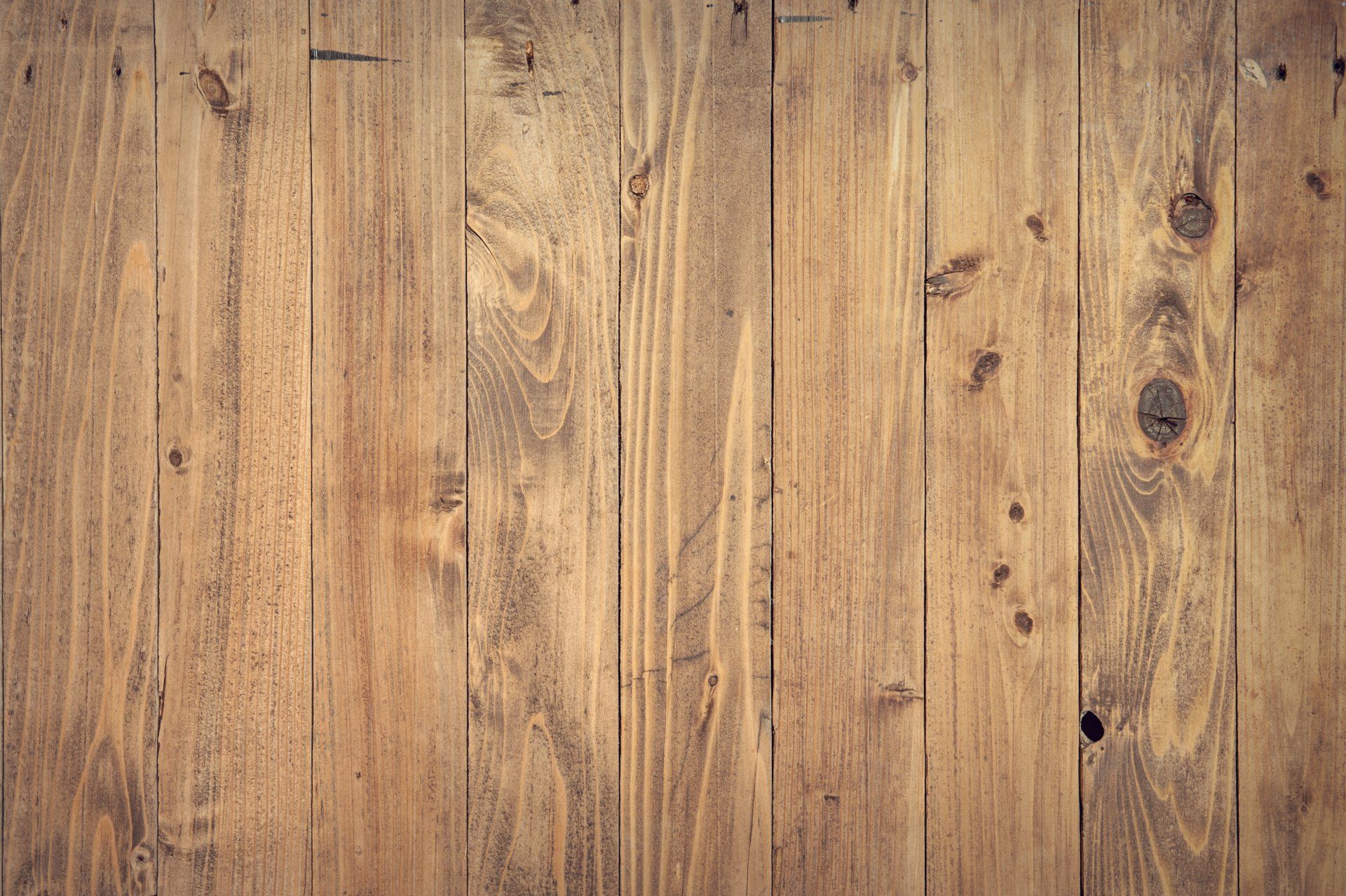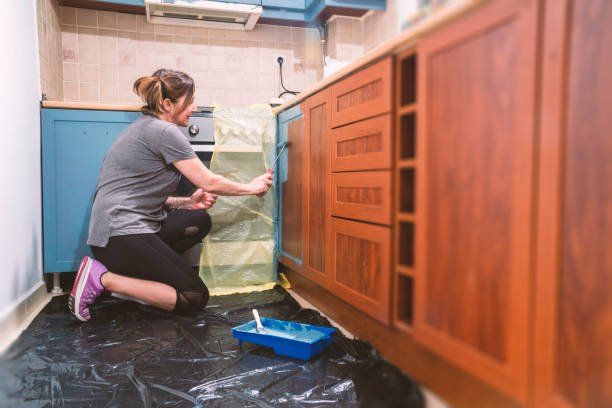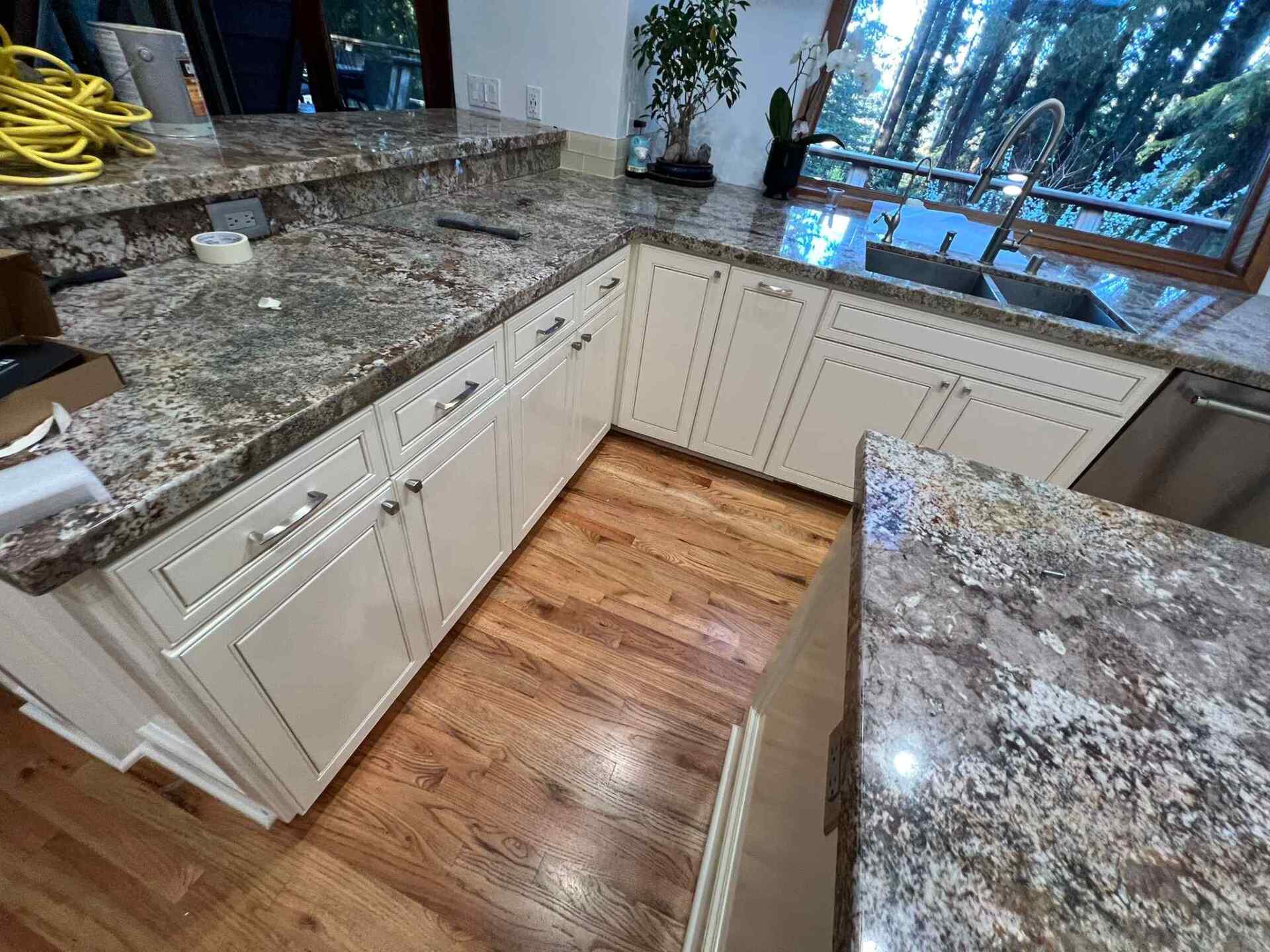Restaining Hardwood Floors: Our Step-by-Step Guide
Hire a Professional When Restaining Your Hardwood Floors
Thinking of getting your hardwood floors redone?
Look no further than Peninsula Painting Services. We handle projects all over the Bay Area from San Francisco and all the way down the Peninsula, residential or commercial, big or small.

Wood floors exude timeless elegance and beauty, especially when complemented with the right floor finish, which starts with proper wood preparation.
Over time, however, hardwood floors may lose their luster, revealing scratches and wear that call for refinishing. Many homeowners believe that applying wood stain and restaining hardwood floors is an insurmountable task best left to professionals. This misconception often deters them from restoring the natural charm of their living spaces. Restaining and refinishing are surprisingly achievable.
1. Hiring the Right Contractor for the Job
Hiring Peninsula Painting Services for restaining hardwood floors significantly impacts the project's success.
Expertise and years of experience should play a crucial role in your decision-making. Consider seeking recommendations from friends, family, or online reviews—words from past clients provide invaluable insight into a contractor's reliability and quality of work.
An ideal contractor will not only meet but exceed expectations, ensuring the floors regain their former glory while fitting within your budget. Establish clear communication from the outset, so your vision translates seamlessly into reality. Be sure to emphasize professionalism, transparency, and meticulous attention to detail in your search.
2. Tools and Materials Used By the Professionals
Professionals rely on specific tools for restaining.
To start, they typically utilize high-quality sanders before applying wood stain. This equipment ensures old stains and finishes are removed evenly, creating a smooth base for the new stain to adhere effectively. Moreover, advanced vacuum systems are crucial for eliminating dust particles. Consequently, these ensure a cleaner environment and a more even application of the stain.
Handheld brushes maintain fine detailing.
Stains and finishes are selected carefully—wood type, desired color, and room lighting all play a significant role. Additionally, applying protective topcoats ensures long-term durability and shine.
Modern professionals stay updated with the latest innovations in restaining hardwood floors, embracing new techniques and advanced materials to achieve optimal results. Every step of their methodical process reflects a dedication to quality and excellence.
3. Preparing the Room
Start by meticulously clearing the room of all furniture and decorations to provide an unobstructed workspace, ensuring that nothing will interfere with the restaining process.
Removing all items helps avoid any accidental damage and provides ample space to maneuver. Properly cover any remaining fixtures or immovable objects with protective materials such as plastic sheeting to shield them from potential stains and dust particles generated during sanding and staining.
Ensure the room’s ventilation system is optimally set up to enhance airflow and minimize the lingering odors of the newly applied stain. Additionally, safety precautions, such as wearing masks and goggles, should be adhered to diligently to foster a secure and efficient environment.
4. Sanding the Hardwood Floors
Sanding the hardwood floors is an essential step in preparing the surface for restaining, and it sets the foundation for a flawless finish.
Achieving smooth floors requires precision and patience, crucial elements in the refinishing process.
Start by using a drum sander for the main sections and an edge sander for corners, ensuring every inch is evenly sanded and free of the old finish, scratches, and imperfections.
This rigorous sanding process will reveal the natural beauty of the wood, ready to absorb the new stain and showcase its grain patterns. To ensure success, enthusiasts should contend with a bit of dust, knowing it is "fairy dust" leading to extraordinary results.
5. Cleaning the Surface
Once the sanding process is complete, it's paramount to thoroughly clean the surface to remove all dust and debris.
This step cannot be overstated.
An immaculate surface ensures proper stain adhesion and results in a flawless finish, making this stage essential. Enthusiasts should use a high-quality vacuum to meticulously remove the dust particles, considering it as critical preparation.
Following vacuuming, they should employ a tack cloth or a microfiber cloth to pick up any remaining dust. This final sweep will ensure the hardwood floor is pristine, ready to embrace the restaining process with maximum effectiveness.
6. Applying Stain to Hardwood Floors
After ensuring the hardwood floor is impeccably clean, it's time to apply the stain. Choosing the right stain color is essential for achieving the desired look.
Using a professional-grade brush, applicator, or cloth, they should begin by testing the stain on a small, inconspicuous area to verify the color outcome. This preparatory step can avert unexpected results and reaffirm their choices before proceeding with the entire floor.
Once satisfied with the test patch, they should apply the stain evenly across the floor, working in manageable sections and following the wood grain to maintain a uniform appearance. Patience and attention to detail are critical here, as rushing may lead to uneven coloration or missed spots. After application, allowing the stain to penetrate for the recommended time ensures timeless beauty and resilience for the hardwood floors.
7. Sealing and Finishing
Applying the sealant is vital for protection.
Sealing hardwood floors not only enhances the appearance but also safeguards against everyday wear. They should start by selecting a high-quality sealant suitable for their specific hardwood type, ensuring it complements the chosen stain color ideally. Preparation is the key to a flawless application, ensuring all necessary tools are within reach. Light sanding before sealing improves adhesion, facilitating a flawless floor finish.
They must carefully follow the sealant manufacturer’s instructions - this includes applying thin, even coats to ensure a durable finish. Drying times vary, so they should not rush this part of the process.
The final step is applying a durable finish. This elevates the hardwood floor’s resilience while adding a refined sheen. With meticulous attention to each stage, restaining hardwood floors transforms from a daunting task to an empowering home improvement project.
7. Drying and Curing Time
Patience during the drying and curing period is paramount for optimal results, and ensuring proper wood preparation from the beginning stages enhances overall quality.
After applying the finish, they must allow adequate drying time as specified by the product instructions. Most finishes recommend at least 24 hours before the floor can endure light foot traffic.
While the surface might seem dry, the curing process is ongoing, typically taking anywhere from a few days to several weeks. They should ensure proper ventilation to expedite this curing phase.
During this period, it’s crucial to minimize disturbances to the floor. Heavy furniture should not be replaced, and area rugs are best held off until full curing is complete, generally around 7-30 days.
Proper curing guarantees a resilient and stunning hardwood floor, rewarding their meticulous efforts.
9. Maintenance Tips
Maintaining newly restained hardwood floors ensures longevity, retains their beauty, and safeguards their integrity. Regular upkeep, a diligent cleaning routine, and mindful practices will optimize the floor's appearance.
First, establish a gentle cleaning regimen, avoiding harsh chemicals. Daily dust mopping captures grit that can cause scratches.
Secondly, they should promptly wipe spills to prevent moisture damage. Excessive water can seep into the wood and impair its finish.
Additionally, placing mats at entrances reduces dirt and debris tracking. Use furniture pads to prevent dents and scratches from heavy items.
It's also advisable to schedule periodic professional maintenance. Experts can rejuvenate the finish if signs of wear appear, maintaining the floor’s aesthetic.
Conclusively, investing in high-quality maintenance products will significantly boost the durability of the restained hardwood floors. By adhering to preventive measures and careful cleaning, they can relish a timeless, elegant floor for years.
You might also like
Book A Service Today



